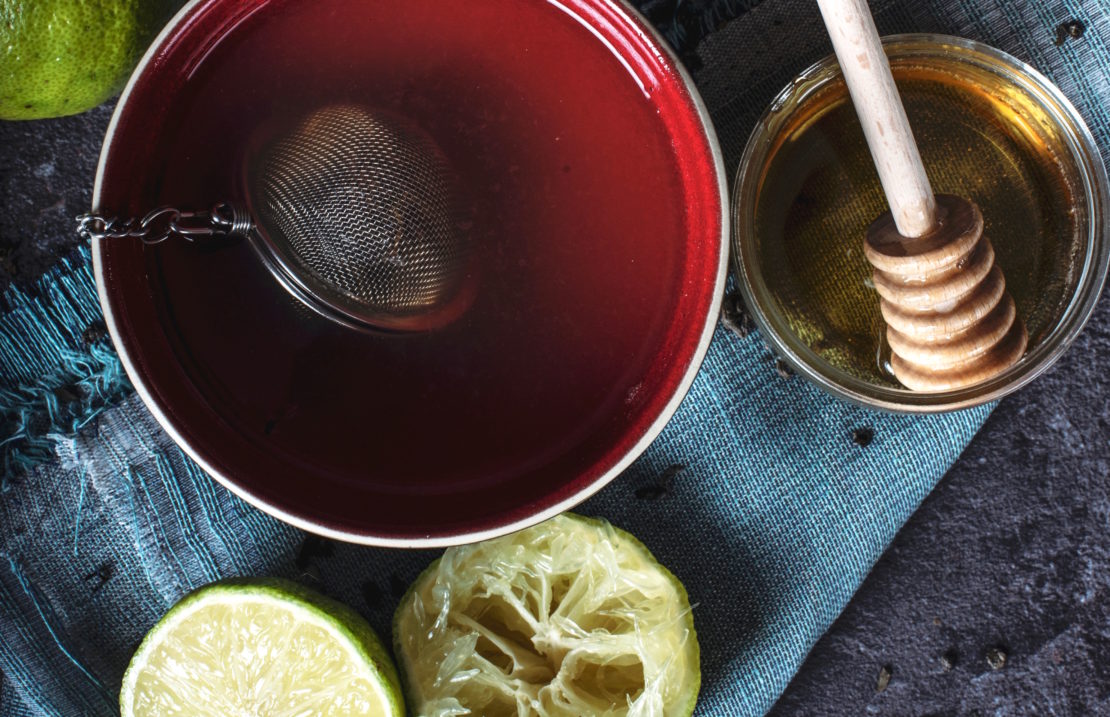
8 Supportive Herbs for Colds and Flu
Colds and flu are at its peak right now and it hits hard and fast. While prevention is the best defense, what do we do when symptoms hit? Some of us prepare for the cold and flu season in the fall by starting our fire cider and tinctures to stay healthy and support wellness at the onset.
I’m Sick – Now What?
Many herbalists keep their arsenal stocked and ready. But, what if you find you don’t have the herbs you need? What if the herbs you need are not readily available in your area? Once symptoms hit, you don’t have time to order online. You want help and you want it fast.
Luckily, there are plenty of herbs you can buy at your local supermarket to shorten the duration of colds and flu. And, if taken early and often, it is possible to aid an illness from worsening and turning into bronchitis or pneumonia.
The supportive herbs below are meant to be simple to make using ingredients that are readily available. The best thing about these recipes is that they can be customized to the individual and many of the herbs can be used to address a variety of illnesses including colds and flu.
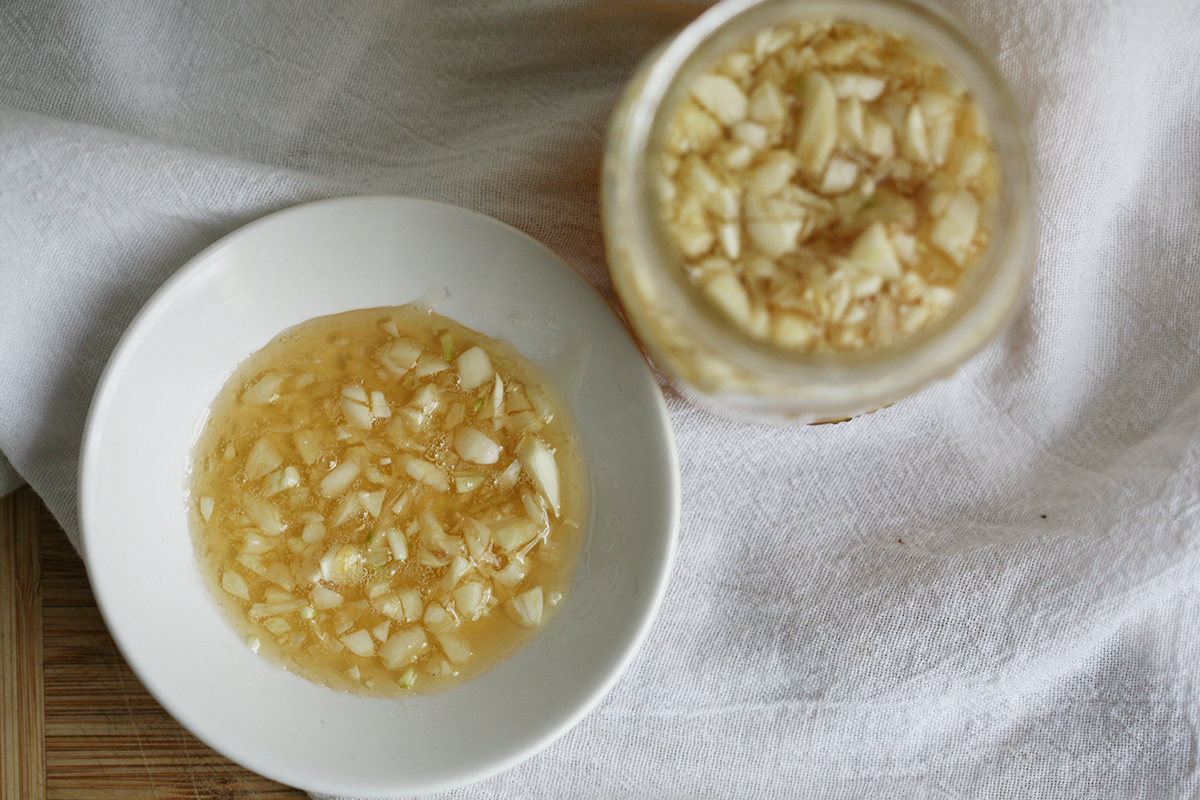
Supportive Herbs for Colds and Flu Shopping List:
Garlic – anti-viral, antibiotic, and antiseptic.
Onion – great for coughs and raw onion keeps the respiratory tract open.
Ginger – antimicrobial and anti-inflammatory. In addition to addressing cold/flu, ginger is excellent for nausea and vomiting.
Sage – carminative, antiseptic, and astringent – the mouth and throat plant. Used for sore throats and cough. Also used for sinus congestion. Sage should not be used when pregnant or breast feeding.
Thyme – antimicrobial, antibacterial, antiviral, expectorant, and astringent. Thyme is great for respiratory infections and coughs. It is also good for the stomach and relieves gas.
Cayenne powder – stimulant, anti-microbial, analgesic, carminative, diaphoretic, and expectorant. Cayenne can help a cold or flu as well as shorten the duration of a cold or flu. It brings heat to the body, which can help dispel coldness.
Honey – raw, local honey should ideally be purchased either at a farmer’s market or at Whole Foods or Trader Joes. Honey is antibacterial, antimicrobial, and antiseptic. Do not give honey to children under 1 year old.
Lemon – high in vitamin C, lemon may help decrease the strength of the cold and flu virus in the body and reduce phlegm. Many folks use lemons to build resistance to cold and flu.
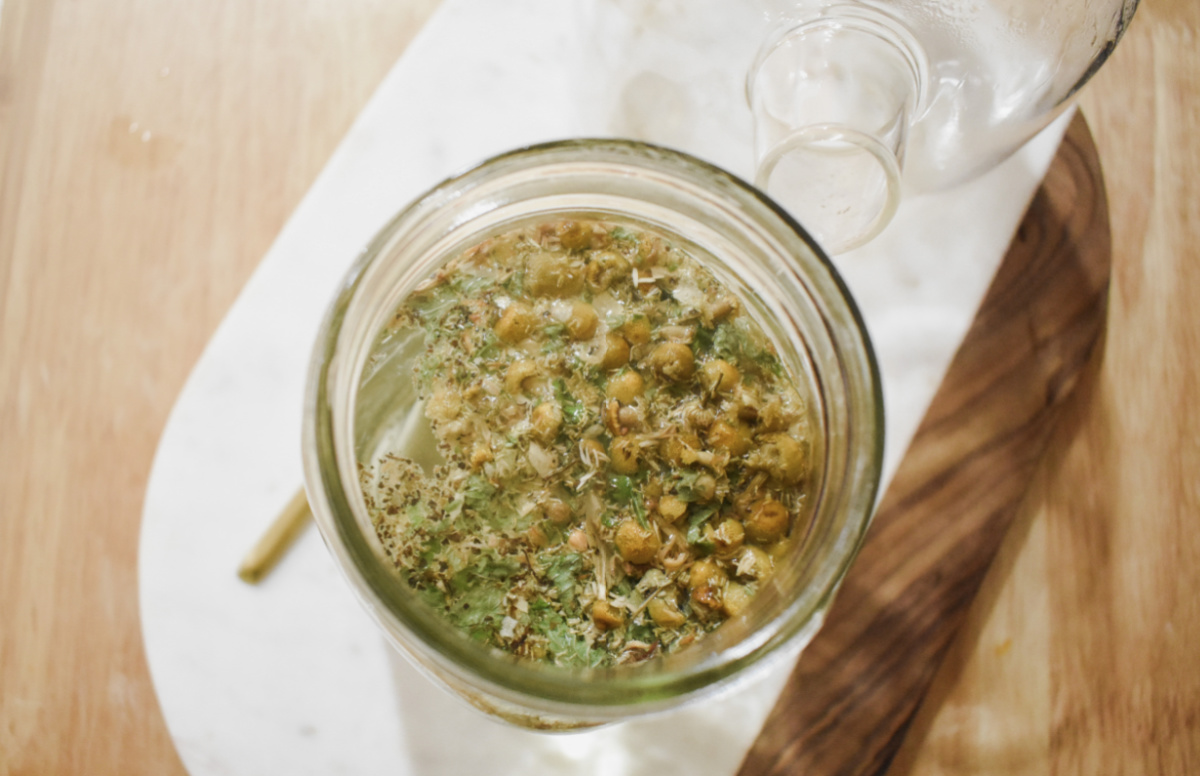
Tea and Infusions
HERBAL TEA – GENERAL PREPARATION
Herbal teas are a great way to support colds and flu! Not only do you get the benefits, but they are also soothing, warm, and relaxing.
- Pour boiling water over the herb, steep at least 20 minutes, and strain.
- You can also use a French press, preparing as above and pressing after 20 minutes
INFUSION – GENERAL PREPARATION
Infusions usually use more herbs than regular herbal teas and are steeped for longer periods of time. I find using a French press to be the best method of infusing and the easiest way to strain. But, any glass jar (mason or recycled food containers) and a fine mesh strainer or cheesecloth can be used.
- 2 ounces of herbs or 2 generous handfuls of dried herb
- 1 pint of water (if not completely covered add more water until the herb material is completely covered)
- Steep for 4 – 10 hours or overnight
- Strain herbs
Garlic Lemonade
This is another base recipe to drink daily through the duration of illness.
2-4 chopped garlic cloves
3-4 slices fresh ginger
Raw honey
Water
2-3 lemons
- In a 1 quart mason jar combine 2-4 cloves chopped garlic and 3-4 slices of fresh ginger.
- Cover and let steep for at least 20 minutes.
- Add juice of 2-3 lemons and honey to taste (approximately ¼ cup)
- You can strain or leave herbs in mixture.
- Consume warm and as needed. It can be consumed at room temperature, but not chilled.
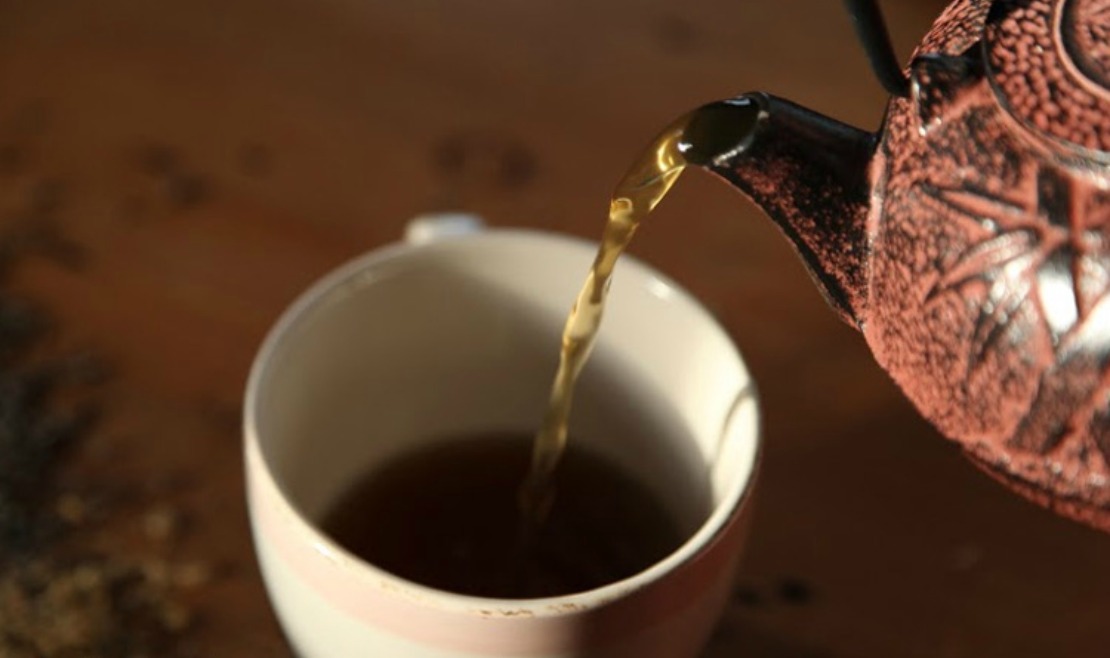
Basic Cold & Flu Tea
I use this tea as a base and then add some of the other preparations below if needed. Garlic can irritate the stomach. If you are drinking this often you may need to adjust the amount of garlic or eliminate it.
3-4 slices fresh ginger with skin
One clove chopped garlic
Cayenne powder
Tea of choice (black, green, oolong, herbal)
Honey to taste
Milk/milk alternative, optional
- Bring 3-4 slices of fresh ginger (skin on) and one clove of chopped garlic to a boil and simmer for approximately 20 minutes
- Use ginger water to steep tea (black, green, oolong or any herbal tea)
- Add cayenne powder as hot as can be tolerated to induce sweating
- Honey to taste
- Add milk or dairy alternative (almond, soy or other)
- Drink 3-4 cups per day
- Drink before bed and bundle up to induce sweat
Below are some easy tea preparations for a variety of symptoms.
Ginger Tea: 2- 3 slices of ginger per cup of water (or to taste – ginger can be strong)
Sage Tea (Avoid if pregnant or breastfeeding): 1 ½ teaspoon dried sage (or 3 teaspoon fresh) per cup of water.
Thyme Tea: 1 ½ teaspoon dried thyme (or 3 teaspoon fresh) per cup of water.
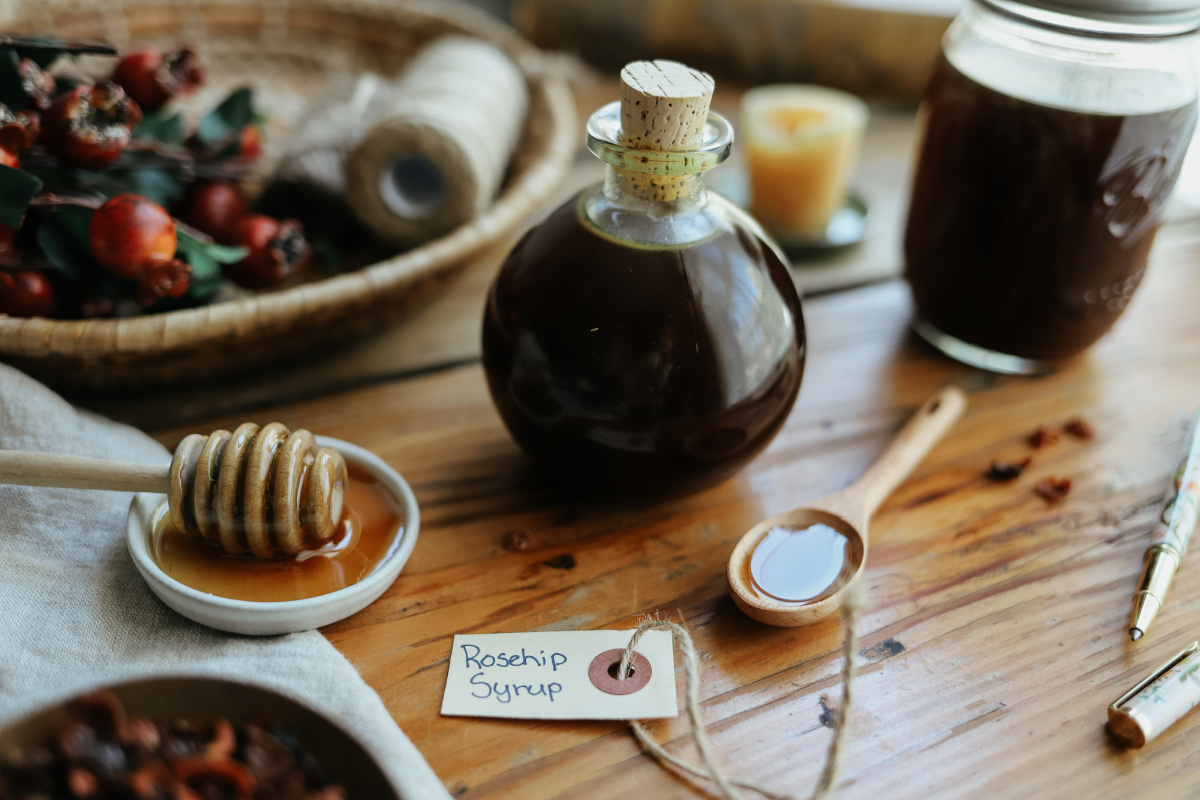
Herbal Honeys and Syrups
Syrups make herbs tastier and they work well to soothe cough and sore throats. Local honey is best but should not be given to children under age 1. Powdered herbs are suggested to avoid the hassle of straining from honey.
Basic Herbal Honey
1 cup raw honey
1/4 cup dried powdered herb
Sterilized, dry jar and lid
- Place honey and herbs into sterilized, dry jar and place into a double boiler over low heat.
- Heat for 15 to 20 minutes, being sure not to let the honey boil or scorch.
- Stir, then remove from heat and cool.
- When completely cooled, seal and store.
- Honey can be used immediately, but for a stronger honey, leave plant material in honey for two weeks before using.
Basic Syrup Recipe
Warmed herbal decoction or infusion (see above)
Raw honey
Sterilized, dry jars and lids
- Begin with an herbal decoction or infusion that has been reduced to about 1/2 to 1/4 of the original amount. For example, if you usually steep 15 grams of herbs in 1 quart of water for 20 minutes, infuse the same amount of herbs in 1 cup of water for the same amount of time.
- Strain tea well.
- Add three times as much honey (in volume) to a double boiler (or something you have fashioned yourself that acts like a double boiler). For example, if you have 1 cup of tea, combine this with 3 cups of honey.
- Heat gently, avoiding a simmer or boil.
- Stir into the tea until it is completely incorporated.
- Divide smaller portions into sterilized jars.
- At this point, you can add tincture if desired, cap jar, and shake it to infuse the added medicine.
- Store in refrigerator.
Below are honey and syrup recipes to try:

Onion Cough Syrup – Honey Alternative
2–3 onions
White or brown sugar
Sterilized, dry glass jar and lid
- Peel and chop the onions.
- Alternate ½ inch layers of sugar and onion in a glass jar, starting and ending with sugar.
- Refrigerate overnight.
- You can strain out the onions or leave them in the syrup.
- Keep refrigerated.
Garlic Honey
6 cloves raw garlic
1/4 cup raw honey
Sterilized, dry glass jar and lid
- Finely grate raw garlic and let sit for 10 minutes
- Add honey to garlic and mix.
- Can be consumed immediately.
- Store in a sealed, sterilized, and dry jar.
- Stir well with dry clean spoon and turn jar to mix daily and before taking.
- For internal use, spread 1 tablespoon on a piece of bread and eat, twice a day during active infection.
Onion Honey
1–3 organic onions
Raw honey
Sterilized, dry jar and lid
- Peel and chop the onions and place in jar.
- Pour enough honey to completely cover onions and leave overnight in fridge.
- Store in refrigerator.
Steam Inhalation
Steam transports herbs into the nose and throat that help with colds and flu. Use extreme care not to burn your face, especially with the first rush of hot steam.
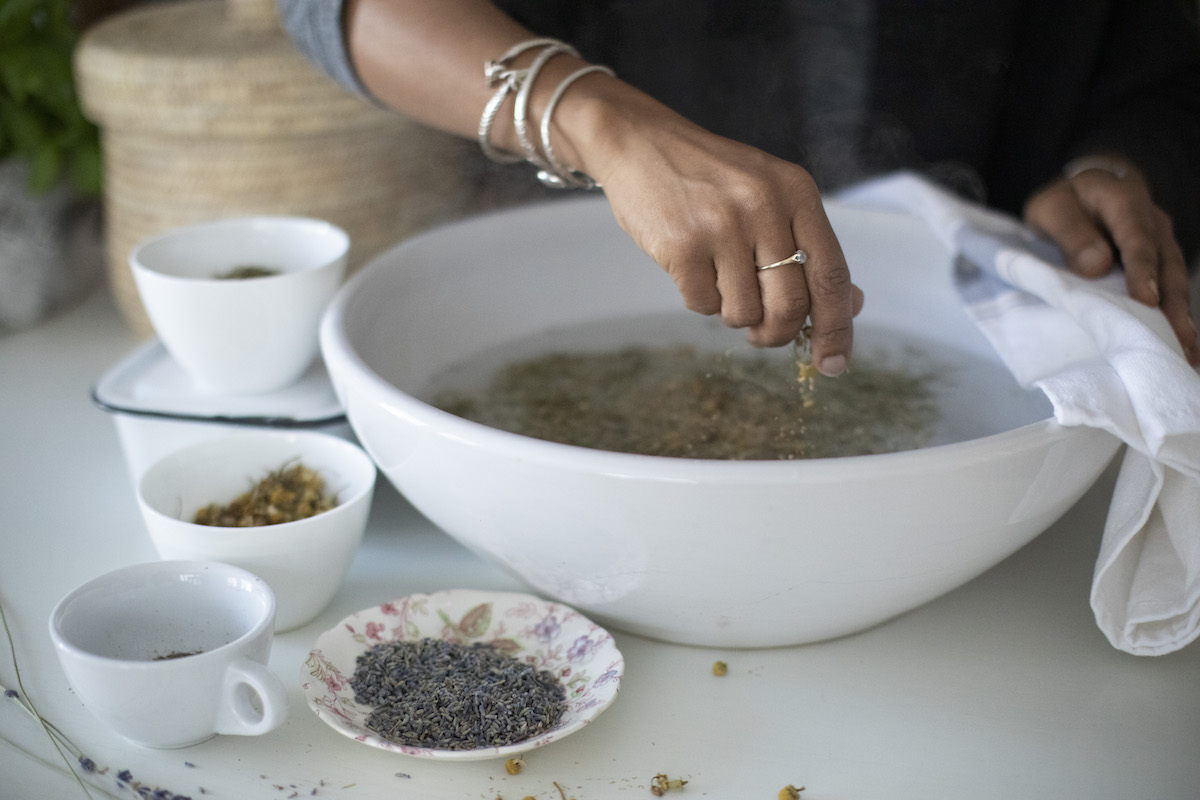
Basic Steam Inhalation
- In a large heat proof glass or ceramic bowl, add a generous handful of your herb/s of choice.
- Pour the boiling water over the herbs, place face above bowl, and quickly throw towel over head. Use caution: start high above bowl to avoid burning face.
- Inhale the steam for approximately 10 minutes or more.
Suggested Amounts
Dosages vary by herb, condition, constitution of a person, and herbalist preference. In general, for acute conditions, small amounts are taken frequently. For chronic conditions, dosages are larger amount taken less frequently but on a consistent basis.
Adults – Acute illness guidelines:
Syrups and honey – ½ to 1 teaspoon every 2 hours for a total of up to 10 teaspoons daily.
Tea – ¼ cup of tea every half hour for a total of up to 4 cups per day.
Adult – Chronic illness guidelines:
Syrups and honey – 1 to 2 tablespoons twice daily or as needed
Tea – 3 to 4 cups daily
Children – Guidelines:
Always consult qualified health professional before administering herbs to children. Do not give honey to children under 1 year.
| When adult dosage is 1 cup (8 oz.) | |
| Age | Dosage |
| Younger than 2 years | ½ to 1 teaspoon |
| 2 to 4 years | 2 teaspoons |
| 4 to 7 years | 1 tablespoon |
| 7 to 11 years | 2 tablespoons |
| When adult dosage is 1 teaspoon or 60 drops | |
| Age | Dosage |
| under 1 year | consult physician |
| 12 to 18 months | 7 drops |
| 18 to 24 months | 8 drops |
| 2 to 3 years | 10 drops |
| 3 to 4 years | 12 drops |
| 4 to 6 years | 15 drops |
| 6 to 9 years | 24 drops |
| 9 to 12 years | 30 drops |
What Herbs to Use for Colds and Flu and When
All the herbs discussed are culinary herbs. But, when used for illness, they should be used in moderation when pregnant or breastfeeding. Avoid sage if pregnant or breastfeeding as it is sometimes used to dry up breast milk. In many cases, thyme can be substituted. You can choose one herbal preparation or use several depending on symptoms. You can also use the 2 base recipes above and address other specific symptoms by adding other teas, honey, or syrups.
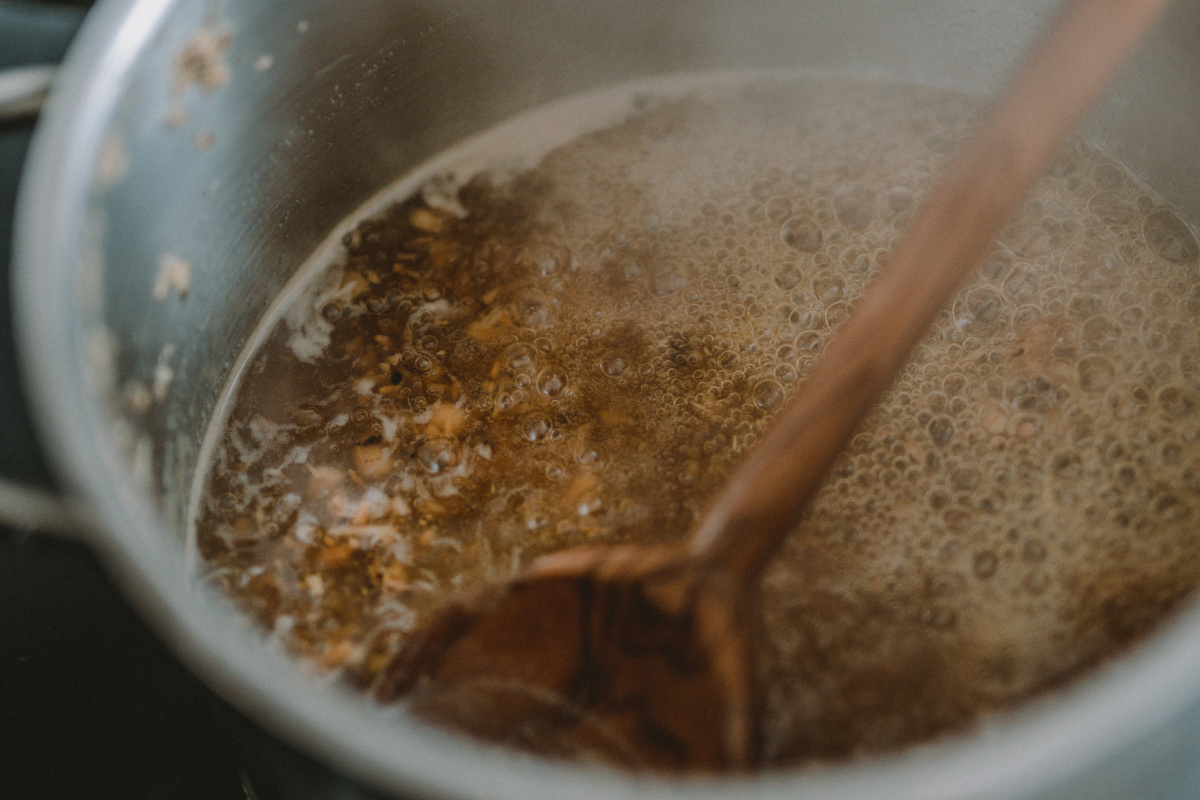
Herbal Support for Cough
Onion honey – 1 spoonful as needed
Onion cough syrup
Thyme honey
Thyme tea with lemon
Thyme and/or sage inhalation
Herbal Support for Respiratory Symptoms
Thyme and Sage tea are lung strengtheners and support respiratory tract problems. You can use both thyme and sage alone or they can be used together
Thyme and/or sage steam inhalation, teas, or honey
Herbal Support for Nausea
Plain ginger tea is the go-to tea for nausea and vomiting
Thyme tea sweetened with honey is a close second to ginger tea
Thyme syrup
Ginger syrup
Herbal Support for Sinus Congestion
Sage tea in Neti pot
Neti pot with saline
Herbal Support for Sore Throat
Sage tea (drink as needed and add honey and lemon to taste)
Warm water and salt gargle
Warm sage tea and salt gargle
Turmeric and salt gargle
Use thyme tea in a small spray bottle and mist the back of your throat
Herbal Insider Tips for Colds and Flu
- Lemon juice squeezed into your sage tea removes the bitterness.
- Sweeten your tea with sugar or honey for respiratory problems, but leave it unsweetened for digestive upset.
- Make an infusion of 1 cup of herbs and 1 quart of water. Infuse overnight in a French press and strain. Heat individual servings on the stove throughout the day when ill, rather than making an individual cup each time.
- Over-the-counter medications suppress symptoms. Taking a little time to prepare these herbal supports not only will help you feel better, but also aid the body in doing its job of healing itself.
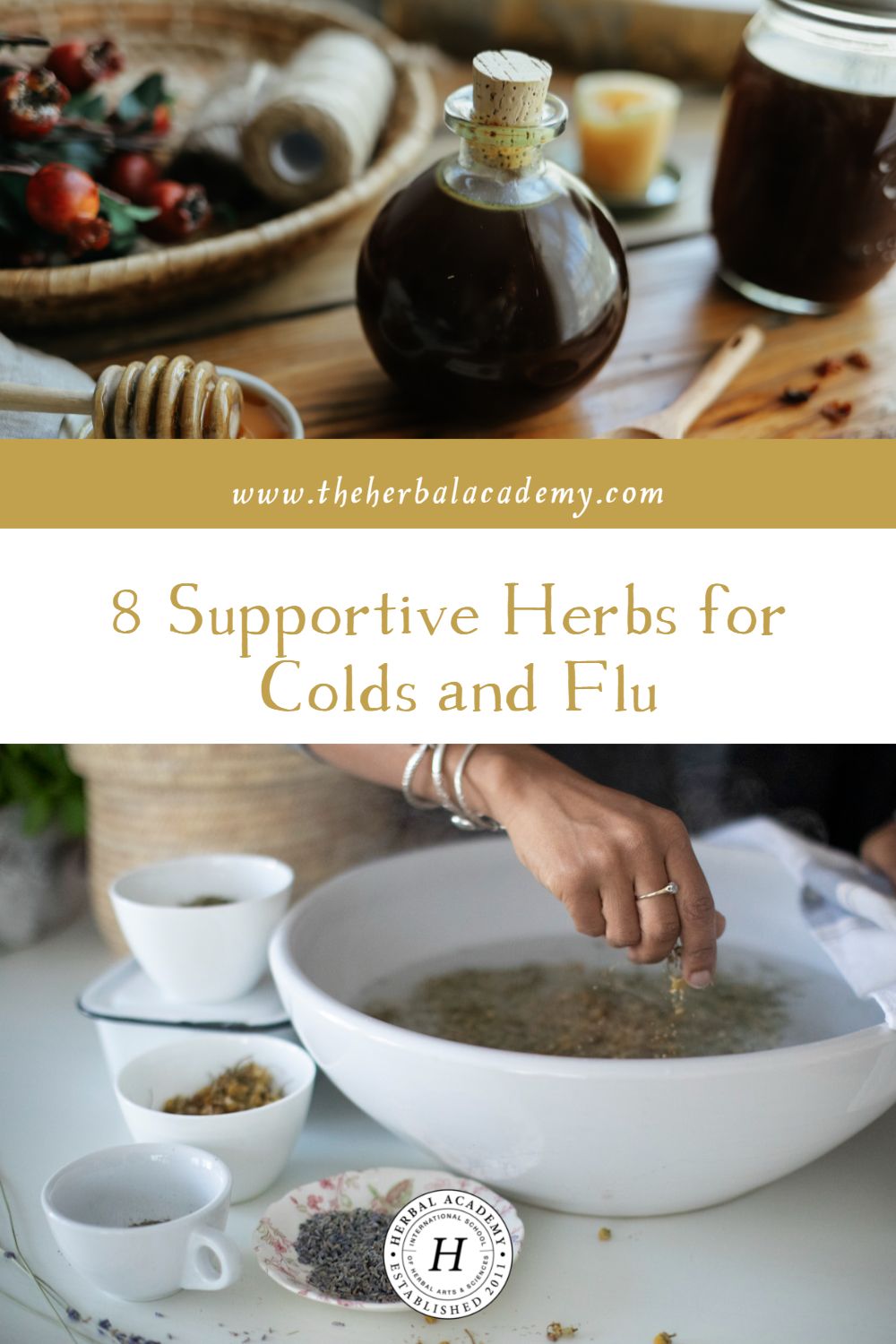
REFERENCES
de la Foret, R. (n.d.). Herbs With Rosalee. HerbalRemediesAdvice.org. https://www.herbalremediesadvice.org/rosalee-de-la-foret.html
Gladstar, R. (2012). Rosemary Gladstar’s Medicinal Herbs: A Beginner’s Guide. Storey Publishing.
Henriette’s Herbal. (n.d.). Henriette’s Herbal. Retrieved January 24, 2023, from www.henriettes-herb.com/
Intermediate Herbal Course. (n.d.). Herbal Academy. Retrieved January 23, 2023, from https://theherbalacademy.com/product/intermediate-herbal-course/
Kress, H. (2018). Practical Herbs. Aeon.
Ellen Demotses is an aromatherapist, and a TCM and Western herbalist. She is a member of the American Botanical Council and the American Herbalists Guild and is developing a natural skincare line.







